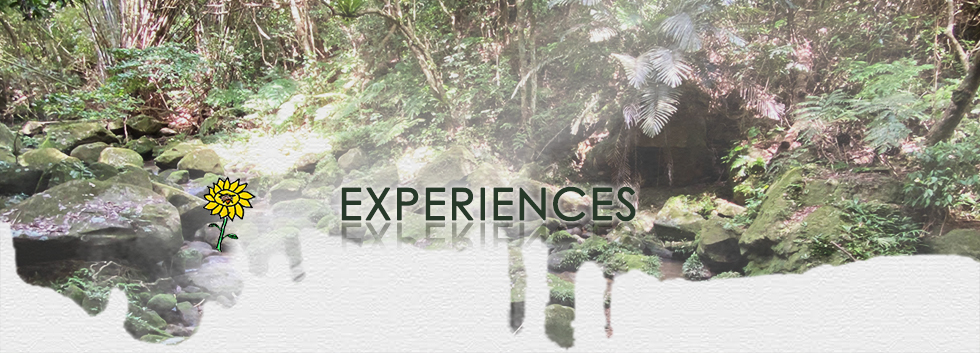Organized by Yu-Chen
Marine Ecosystem
(A) Info Session on Ocean
The area of the ocean covers about 70% of Earth’s surface. Although the ocean has great tolerance and dilution ability, it cannot withstand endless damage caused by humans. The damage can cause eternal disruption to the ocean, by that time it may be too late to restore the marine ecosystem.
Ocean acidification is a crisis and threat to marine life and a major warning to human beings. Global warming emits a large amount of carbon dioxide, nearly half of the carbon dioxide is absorbed by seawater. When water and carbon dioxide mix, they combine to form carbonic acid. Ocean acidification reduces saturation states of calcium carbonate minerals, which can have dramatic effects on marine species and the entire food chain.
The professor conducted an experiment of ocean acidification with us. Through the experiment, it was shocking to witness how acidic seawater can dissolve shells and make shells thinner and easier to break.

Source: Wilderness Crossing

Source: Wilderness Crossing
The Society of Wilderness is dedicated to protecting the ocean environment through experimental activities, beach cleaning, ocean-friendly trips, outdoor activities, and education, raising environmental awareness to more people. We should take practical action to show our love for the ocean.
Although there are many educational groups and environmental protection groups already committed to protect the ocean ecosystems, every citizen of earth is also responsible as we all share the one and only ocean ecosystems.
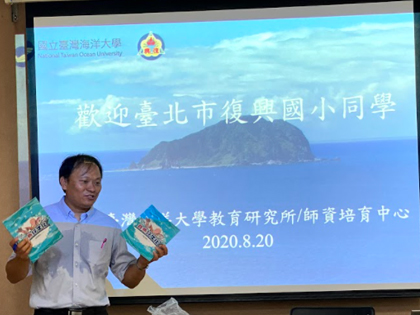
Source: Wilderness Crossing

Source: Wilderness Crossing
| What impressed us the most during the info session was learning about Keelung City Government’s commitment in promoting marine conservation and fisheries management, setting up policies to govern registration of fishery tools and activities, educating fisherman to comply with quota limits, restricted fishing zones and fishing ban periods. In addition, the government is also in collaboration with the National Museum of Marine Science and Technology in establishing a marine conservation area for coral reef restoration. We also learned about becoming a smart seafood consumer, which can help to create a sustainable ocean. The scientific experiment also allowed the team to learn about the immediate need to protect the ocean. It was a very meaningful and rewarding info session. |  |

Source: Wilderness Crossing

Source: Wilderness Crossing
(B) Beach Cleaning Activity
World Clean Up Day is on the third Saturday of September each year. On this day, many activist groups either host or participate in beach cleaning activities. The Society of Wilderness (SOW) decided to host a beach cleaning activity during summer break, prior to the World Clean Up Day. We were led by our school’s Director Chan to participate in this beach cleaning activity.
Prior to the participation, Director Chan went through a preparation briefing to remind us that we need to pay attention to UV exposure and wear protections such as hats, gloves, and shoe wraps. For equipment, in addition to iron clips and garbage bags, for the purpose of cut prevention, linen bags should be used for glass and other fragile items. The waste collected from the beach cleaning activity was recorded and categorized according to a classification table set by the Society of Wilderness. The SOW will analyze the source of the wastes and provide the report to the environmental protection agency as an effort to improve the management of marine wastes. However, the actual waste gathered from the activity will be collected and recycled by the city’s cleaning team. Non-recyclable waste such as fishing equipment and dirty food containers will be treated as general garbage.

Source: Wilderness Crossing
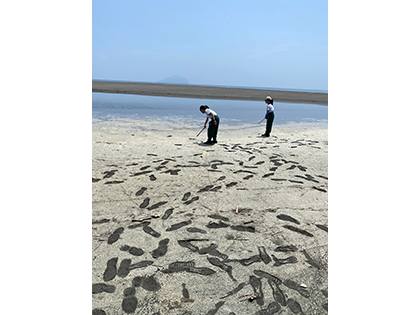
Source: Wilderness Crossing
The location of the beach cleaning activity took place at Zhuan River Outlet, which is near our school’s Yilan branch. Under typical hot summer weather, we brought along eco-friendly water bottles and prepared ourselves for the activity.
As we arrived at the riverside, we were surprised by the amount of waste we saw. There was rotten food attracting bugs by the entrance, probably leftovers from barbeques or picnics. Our teacher Mr. Lin volunteered to stay and collect the leftover waste as we moved forward.
When we paid close attention, we could see shattered glasses over the beach. The director had said that these glasses came from the energy drinks the fishermen drank in the early morning before they went out to the sea. We could also spot plastic bags and bottles everywhere. Some of the wastes are disposed of by unethical people, some are drifted with ocean currents. When fishing equipment such as fishnet, buoy, fishline were buried into the sand, it became extremely difficult to retrieve. We had also encountered a buried canvas bag which required the director’s help to pull it out. We couldn’t help wondering the consequences if ocean creatures had eaten these wastes. The oceans connect the world together, therefore it is every citizen’s business and responsibility to take care of the oceans.
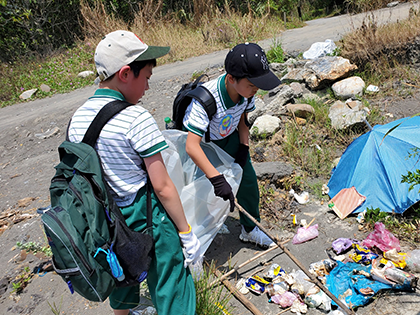
Source: Wilderness Crossing
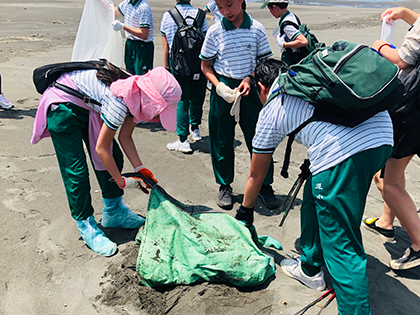
Source: Wilderness Crossing
We shuttled back and forth on the heated beach to pick up garbage. Looking at the seemingly endless coastline, we felt like it would be impossible to clean up the beach completely. But we cheered each other up and continued to pick up as much garbage as possible. For each garbage we picked up, there is one less garbage on the beach.
At the end of the day, the director gathered everyone and took out a scale ready to see the cleanup result. The result was plentiful as we picked up a total of 132kg of general garbage, including rotten food and non-recyclable waste, 2 buoys, 10 fishlines, 8kg of glass bottles, 50 plastic bottles, and 6 aluminum cans. Although we can not solve the marine problems completely by beach cleaning events, we are still very happy to do our part for the ocean.

Source: Wilderness Crossing
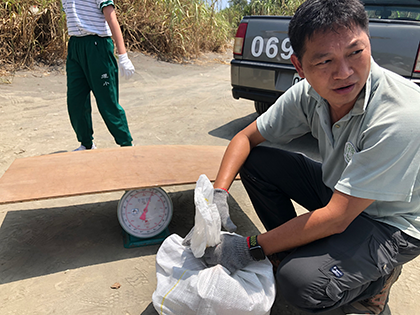
Source: Wilderness Crossing

